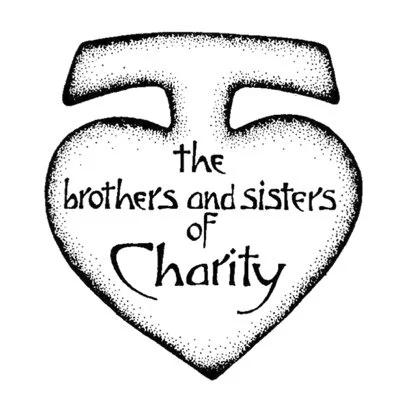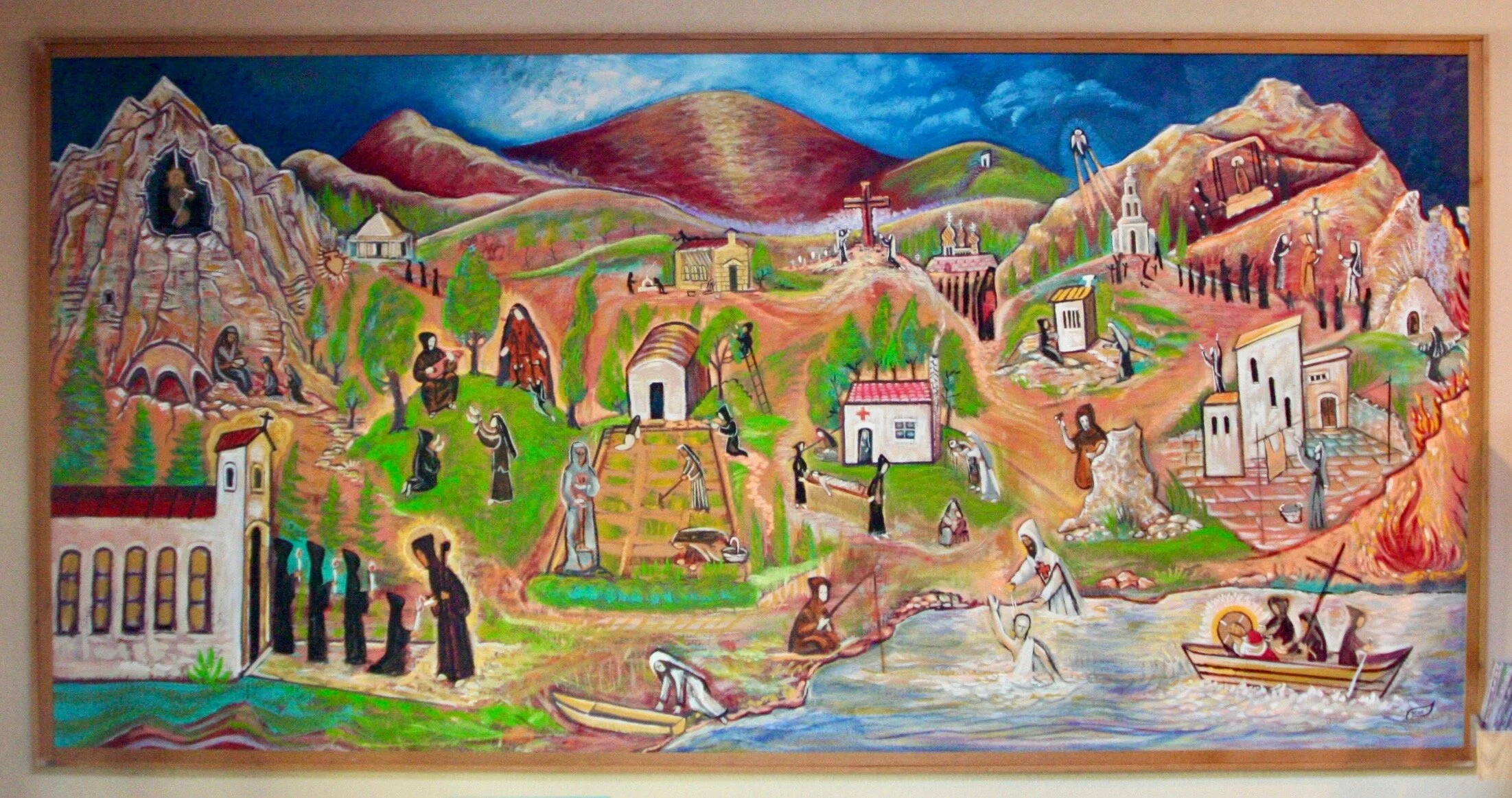from the Monastic Directory
Chapter 1: Basic Vision
1. The monastic expression constitutes the base and core of the whole community due to the monastic origins and centrality in its development.
2. We draw inspiration from the monastic tradition of the hermits, symbolized by St. Antony of the Desert, who sought to follow “God alone”; the cenobites, symbolized by St.Pachomius, who sought to live in the koinonia fellowship of seeking “God alone together”; the monks of St. Basil, who sought the more evangelical life of scripture; and the monks of St. Augustine, who sought the “monos” of being “one” and “united” according to Acts 2 and 4. Of course, the Rule of St Benedict calls us to prefer nothing whatever to Christ, and our Franciscan base calls us to an evangelical life in imitation of the gospel of Jesus Christ.
3. Regarding personal imitation of Christ and apostolic ministry, we find primary inspiration from St. Francis. Regarding orderly community life in the integrated monastery, we find our greatest inspiration from the Rule of St. Benedict. Of course, the desert fathers and mothers who preceded them both are of great importance as an inspiration for our life.
4. The monastery is a school of the Lord's service. The brothers and sisters give themselves to God alone and are formed into true disciples of Jesus Christ through a more intense participation in the life of the church through monastic profession, the teaching of the Spiritual Father and Mother, and the communal life of our monastic family. We are an eschatological sign of things to come.
5. The monastery is socio-eremitical, integrating the eremitical and cenobitical ways of life in the classical pattern of the skete or laura. As such, isolated cells are grouped around common buildings and a chapel. Separate enclosed areas are maintained for the celibate brothers, celibate sisters, singles and family expressions. Each family and professed member lives in their own cell.
6. The monastery is the alternative stable base from which various ministries proceed into the church and the world. As such, it is supported by its own alternative industry and the more institutional ministries directly related to it. Members may work off the property when necessity demands.
7. The monastery is an image of the mystery of the church, so that it forms monastic, or quasi, church. While not part of the hierarchical structure of the church, its religious nature is a charismatic gift of God to the church. Therefore, the church recognizes and supports its consecration through the public profession of the evangelical counsels within the monastic expression.
8. The Integrated Monastery: As St. John Chrysostum says, “The holy scriptures do not know any distinctions. They enjoin that all lead the life of monks even if they are married.” Therefore, our monastic expression is integrated.
9. As consecrated life traces its origins to Jesus and the disciples, who were both celibate and married, and developed primarily but not exclusively with celibates (from monks and mendicants, to include those in societies of the apostolic life without vows, and secular institutes without common life), so do we now include both celibates and families in our new but ancient form of consecrated common life as a true development of that sacred tradition. We continue to emphasize and foster the celibate life as the primary and more traditionally accepted form.
10. As monastic life traces its origins to the hermits who lived alone and developed with the cenobites who lived in the koinonia fellowship of community, so do we now include the socioeremitical approach for monastic celibates and families, as a true development of those who seek to live for “God alone.”
11. The integrated monastery is the most basic expression of the celibate, family, and single community. The integrated monastery includes each monastic expression. Other less integrated local configurations may occur in mission houses and houses of prayer.
12. The integrated monastery is an alternative society formed by Christ within the society of the church and this world, comprising all states of Christian life. As such, it is an alternative loaf to the loaf of this world. It is also a leaven within the dough of the church and the world to keep both from falling. As an alternative society, all that is necessary for basic life is substantially contained within the monastery.
13. Clerics: According to the individual's call from God and the needs of the community, the minister may present some of the brothers for clerical ordination. However, ordination is not a general right inherent with the call to and the charism of the brotherhood. It is extraordinary.




